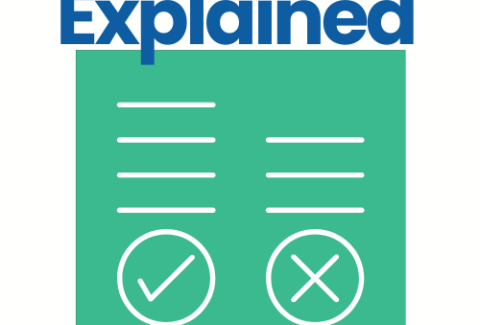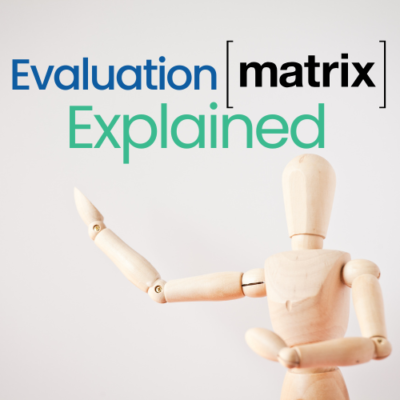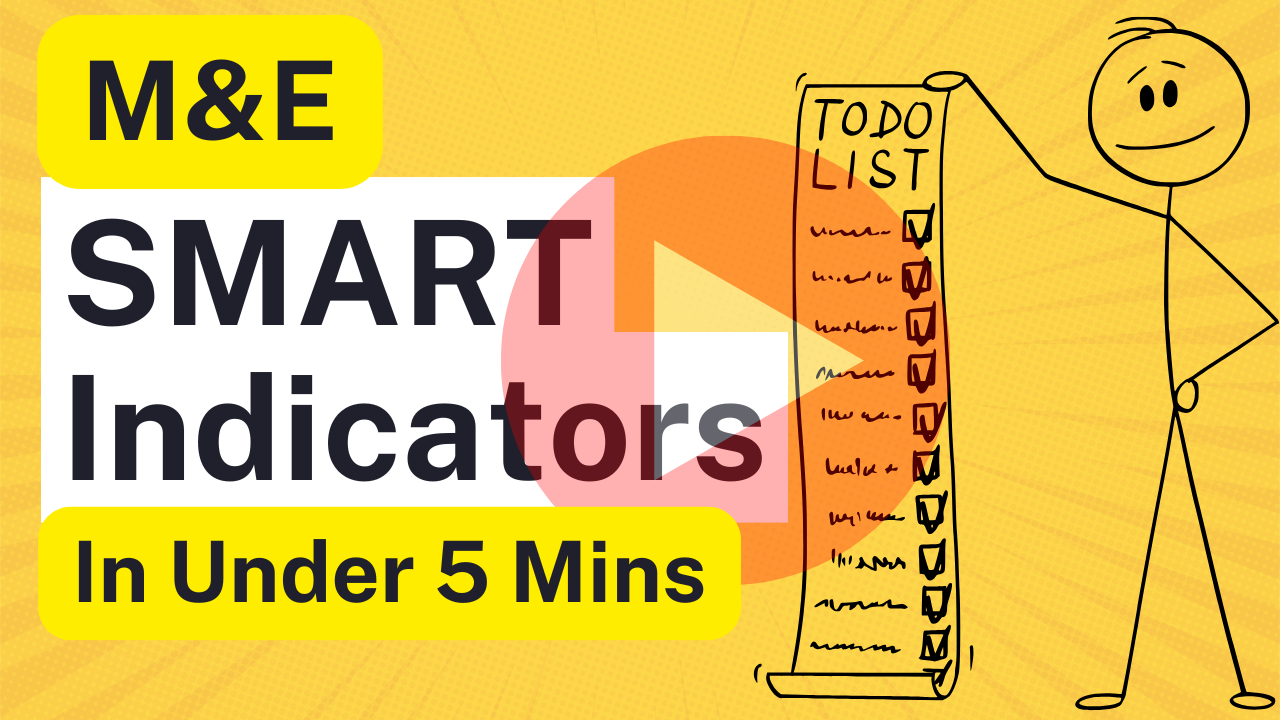Understanding Impact Assessment: Key Insights
December 22, 2023 2023-12-22 16:43Understanding Impact Assessment: Key Insights
As individuals and organizations become increasingly conscious of the social, environmental, and economic impacts of their actions, impact assessment has become a critical tool for responsible decision-making.
This process involves evaluating the potential effects of a project, program, policy, or event on the surrounding environment and communities. Impact assessment provides stakeholders with critical insights into the social, environmental, and economic implications of their actions, allowing them to make informed decisions that promote sustainable practices and long-term benefits for all stakeholders.
In this article, we will delve into the key principles and insights of impact assessment and highlight its importance in sustainable development. We will explore the different types of impact assessment, their methodologies, and their application in decision-making processes.
Whether you are a policy maker, business leader, or engaged citizen, understanding impact assessment is crucial for promoting sustainability and ensuring responsible actions.
Key Takeaways
- Impact assessment evaluates the social, environmental, and economic impacts of a project or policy
- Impact assessment promotes sustainable practices and responsible decision-making
- There are different types of impact assessments, including environmental impact assessment, social impact assessment, economic impact assessment, climate change impact assessment, and social and environmental impact assessment
- Impact assessment involves a step-by-step process, including scoping, data collection, impact identification and prediction, mitigation measures, and monitoring and evaluation
- Understanding impact assessment is crucial for promoting sustainability and ensuring responsible actions
What is Impact Assessment?
Impact assessment is a crucial tool for decision-makers, enabling them to evaluate the potential impacts of policies, plans, and projects on the environment, society, and the economy. The purpose of impact assessment is to inform decision-making processes and reduce negative impacts and optimize positive impacts on people and the planet. There are various types of impact assessments, including:
- Environmental Impact Assessment (EIA): A type of impact assessment that evaluates the potential environmental impacts of a project or policy.
- Social Impact Assessment (SIA): A type of impact assessment that evaluates the potential social consequences of a project or policy.
- Economic Impact Assessment: A type of impact assessment that evaluates the potential economic implications of a project or policy.
By conducting impact assessments, decision-makers can make informed choices that safeguard the environment, promote social equity, and support sustainable development.
The Role of Impact Assessment in Sustainable Development
Impact assessments play a crucial role in achieving sustainable development by providing a comprehensive understanding of the potential impacts of a project or policy. This section will explore the importance of impact assessment in the context of sustainable development and how it helps in identifying potential risks and opportunities. By conducting impact assessments, you can make informed decisions that consider the social, environmental, and economic impacts for a better future.
Sustainable development requires a balance between economic growth, social development, and environmental protection. Impact assessment is a crucial tool in achieving this balance, as it helps in identifying potential environmental, social, and economic impacts before a project or policy is implemented. Through impact assessment, stakeholders can evaluate the potential consequences of a project or policy and make informed decisions that consider the long-term sustainability of their actions.
Impact assessment ensures that potential risks are identified and mitigation measures are put in place to minimize adverse impacts. At the same time, it helps to identify opportunities that can maximize the positive impacts of a project or policy. By evaluating the trade-offs between different impacts, stakeholders can make informed decisions that balance economic, social, and environmental sustainability.
The Benefits of Impact Assessment for Sustainable Development
The benefits of impact assessment for sustainable development are vast. They include:
- Improved decision-making: Impact assessment helps in making informed decisions that consider the potential consequences of a project or policy and identify ways to maximize positive impacts.
- Increased transparency and accountability: By conducting impact assessments, stakeholders can increase transparency and accountability in decision-making processes.
- Promotion of sustainable practices: Impact assessment promotes more sustainable practices and ensures that projects and policies are developed in a way that promotes long-term sustainability.
- Identification of potential risks and opportunities: Impact assessment helps in identifying potential risks and opportunities associated with a project or policy, allowing stakeholders to make informed decisions that consider the trade-offs between different impacts.
The Limitations of Impact Assessment
While impact assessment is a crucial tool in achieving sustainable development, it does have its limitations. These limitations include:
- Limited scope: Impact assessment only considers the potential impacts of a project or policy and cannot capture all potential consequences.
- Subjectivity: The results of impact assessment can be influenced by the values, beliefs, and opinions of those conducting the assessment.
- Resource constraints: Conducting impact assessments can be resource-intensive, and not all stakeholders may have the resources necessary to conduct a thorough assessment.
Despite its limitations, impact assessment remains a crucial tool in achieving sustainable development and promoting more sustainable practices. By conducting impact assessments, stakeholders can make informed decisions that consider both short-term and long-term impacts and ensure a better future for all.
The Process of Impact Assessment
Impact assessment provides a comprehensive understanding of the potential economic, social, and environmental impacts of a project or policy. The process of impact assessment involves several key stages, including:
- Scoping: Defining the purpose and objectives of the assessment, selecting the suitable assessment approach and methodology, and documenting the scope of assessment.
- Data Collection: Collecting relevant information, such as project details, social and environmental data, and stakeholder input.
- Impact Identification and Prediction: Assessing the potential impacts of the project or policy on relevant areas, such as biodiversity, water quality, and public health. Predicting the magnitude, duration, and significance of the impacts.
- Mitigation Measures: Designing and selecting measures to avoid, minimize, or compensate for the potential negative impacts of the project or policy. Developing alternatives that minimize the negative effects and promote positive outcomes.
- Monitoring and Evaluation: Implementing mechanisms to monitor the impacts of the project or policy, evaluating the effectiveness of mitigation measures, and identifying necessary revisions or improvements.
By following this process, you can ensure that the impact assessment is comprehensive, systematic, and transparent, and that the outcomes inform the decision-making process for a better future.
Environmental Impact Assessment (EIA)
Environmental impact assessment (EIA) evaluates the potential environmental impacts of a project or policy. The objectives of EIA include identifying the key environmental impacts, suggesting mitigation measures, and ensuring that the project aligns with sustainable development goals.
The key components involved in conducting an EIA include screening, scoping, impact assessment, and review. Screening is the process of determining if an EIA is necessary, whereas scoping identifies the environmental factors and the potential impacts. Impact assessment involves identifying and assessing the potential impacts of the project or policy, while review evaluates the EIA findings and determines whether the project or policy can proceed.
“EIA provides a crucial framework for mitigating environmental impacts and promoting sustainable development.”
EIA is an essential tool in mitigating environmental impacts and ensuring sustainable development. By identifying potential environmental risks and opportunities, EIA provides decision-makers with critical information that aids in making informed decisions that promote sustainability.
Social Impact Assessment (SIA)
As mentioned earlier, social impact assessment (SIA) plays a crucial role in achieving sustainable development. It helps in evaluating the social consequences of a project or policy, ensuring that the interests of the affected communities are protected.
There are various methodologies used in SIA, including:
- Community participation – involving the communities in the decision-making process and ensuring that their needs and concerns are addressed.
- Stakeholder analysis – identifying the stakeholders and understanding their interest in the project.
- Gender analysis – evaluating the impact on gender, and ensuring that the project doesn’t disproportionately affect one gender.
- Human rights impact assessment – evaluating the impact of the project on human rights and ensuring that human rights are respected.
By using these methodologies, SIA helps in identifying and addressing potential social impacts. It promotes social equity and ensures that the project benefits all members of the community, regardless of their social status.
“SIA helps in understanding the social context in which the project is being implemented. It ensures that the project is socially acceptable and that its benefits are shared equitably.”
Economic Impact Assessment
When considering the feasibility of a project or policy, it is essential to evaluate its economic implications. Economic impact assessment allows us to gauge the project’s potential profitability and how it can positively or negatively impact different stakeholders.
The key components of economic impact assessment are cost-benefit analysis, which helps in identifying the returns on investment, and cost-effectiveness analysis, which provides insight into the optimal allocation of resources. Through these analyses, we can identify the key economic outcomes of a project, including employment opportunities, revenue generation, and impacts on GDP.
Economic impact assessment plays an integral role in achieving sustainable development. By understanding the economic impacts of a project or policy, we can ensure that it aligns with long-term economic and societal goals and supports the transition to a sustainable economy.

Climate Change Impact Assessment
Climate change is one of the most pressing challenges of our time, with far-reaching impacts on communities and ecosystems worldwide. To address these impacts, it is crucial to conduct climate change impact assessments that provide insights into the potential risks and opportunities of climate change.
The primary objective of climate change impact assessment is to evaluate the potential effects of climate change on people, the environment, and the economy. By identifying and assessing these impacts, we can develop strategies and policies that promote climate resilience and adaptation.
The methodologies used in climate change impact assessments typically involve data analysis, modeling, and scenario-building to provide a comprehensive understanding of potential impacts. The assessments also consider the uncertainties and risks associated with climate change, providing decision-makers with valuable information to make informed choices.
Climate change impact assessment plays a critical role in sustainability assessment, as it informs decisions that can mitigate the adverse effects of climate change and promote long-term sustainability. By embracing climate change impact assessment, we can safeguard our future and create a more resilient and sustainable world.
Social and Environmental Impact Assessment (SEIA)
When it comes to sustainable development, a comprehensive approach is necessary to assess a project’s effects on both social and environmental aspects. Social and environmental impact assessment (SEIA) combines social impact assessment (SIA) and environmental impact assessment (EIA) to provide a full understanding of a project’s impacts on communities and ecosystems.
SEIA aims to identify and evaluate potential social impacts related to a project, such as changes in livelihoods, cultural practices, and community cohesion. At the same time, SEIA examines the project’s contributions to the environment, including its impacts on ecosystems, biodiversity, and natural resources.
This integrated approach helps decision-makers assess the trade-offs between social and environmental factors, and consider the needs and concerns of all stakeholders involved. By promoting transparency and accountability, SEIA contributes to sustainable development, ensuring that projects are both economically viable and socially and environmentally responsible.
SEIA requires a multidisciplinary team of experts, including ecologists, sociologists, economists, and other stakeholders to carry out the assessment. The SEIA report includes detailed data on the social and environmental impacts of the project and recommendations for mitigation measures to address negative impacts.
In summary, incorporating social and environmental impact assessment into the decision-making process is crucial for achieving sustainable development. SEIA provides an integrated tool for assessing and addressing the social and environmental impacts of a project, promoting equitable and sustainable development.
The Benefits and Limitations of Impact Assessment
Impact assessment plays a crucial role in promoting sustainable development by providing a comprehensive understanding of a project or policy’s social, environmental, and economic impacts. By evaluating the positive and negative aspects of impact assessment, you can better understand how it can inform decision-making and promote accountability.
Conclusion
By conducting impact assessments, you can identify potential risks and opportunities and make informed decisions that consider the social, environmental, and economic impacts of a project or policy.
Remember, impact assessment is a process that involves various stages, including scoping, data collection, impact identification and prediction, mitigation measures, and monitoring and evaluation. By following this process, you can ensure that your decisions are accountable and aligned with the principles of sustainability.
However, while impact assessment can have positive impacts on decision-making and sustainable development, it is also important to acknowledge its limitations and challenges. Impact assessments can be time-consuming and resource-intensive, and there may be uncertainties or limitations in the data or analysis. It is crucial to acknowledge these limitations and actively work towards improving impact assessment processes.
Overall, impact assessment is a valuable tool for achieving sustainable development. By incorporating impact assessment into your decision-making processes, you can create a better future for yourself, your community, and the planet.
FAQ
What is impact assessment?
Impact assessment is a systematic process that evaluates the potential effects of a project, policy, or development on the environment, society, and economy. It helps decision-makers understand the consequences, both positive and negative, and make informed choices that align with sustainable development goals.
What are the different types of impact assessments?
There are various types of impact assessments, including environmental impact assessment (EIA), social impact assessment (SIA), economic impact assessment, climate change impact assessment, and social and environmental impact assessment (SEIA). Each type focuses on different aspects of impact evaluation to ensure a comprehensive understanding of the project’s effects.
Why is impact assessment important for sustainable development?
Impact assessment plays a vital role in sustainable development by identifying potential risks, opportunities, and trade-offs associated with projects or policies. It helps decision-makers make informed choices that integrate social, environmental, and economic considerations, ultimately promoting long-term sustainability.
What is the process of conducting an impact assessment?
The process of conducting an impact assessment involves several key stages, including scoping, data collection, impact identification and prediction, development of mitigation measures, and monitoring and evaluation. This systematic approach ensures that all potential impacts are considered and appropriate measures are taken to minimize or mitigate adverse effects.
What is environmental impact assessment (EIA)?
Environmental impact assessment (EIA) is a type of impact assessment that specifically focuses on evaluating the potential environmental consequences of a project, policy, or development. It considers factors such as air and water quality, biodiversity, land use, and resource consumption to ensure sustainable environmental management.
What is social impact assessment (SIA)?
Social impact assessment (SIA) is a type of impact assessment that assesses the potential social consequences of a project, policy, or development. It considers factors such as social justice, human rights, community well-being, cultural heritage, and livelihoods. SIA helps identify and address social impacts to ensure inclusive and equitable development.
What is economic impact assessment?
Economic impact assessment evaluates the potential economic implications of a project or policy. It focuses on factors such as job creation, income generation, economic growth, and productivity. Economic impact assessment helps decision-makers understand the economic consequences of their choices and supports sustainable economic development.
Why is climate change impact assessment important?
Climate change impact assessment is crucial for understanding and mitigating the effects of climate change. It assesses the potential impacts of climate change on ecosystems, communities, infrastructure, and economies. By identifying vulnerabilities and implementing adaptation strategies, climate change impact assessment helps build resilience and supports sustainable development in the face of a changing climate.
What is social and environmental impact assessment (SEIA)?
Social and environmental impact assessment (SEIA) is an integrated approach that combines the assessment of both social and environmental impacts. It provides a holistic understanding of how a project or policy affects communities, ecosystems, and natural resources. SEIA facilitates the development of strategies that prioritize sustainable development and social and environmental well-being.
What are the benefits and limitations of impact assessment?
Impact assessment has several benefits, including informed decision-making, enhanced stakeholder engagement, improved project design, and accountability. However, there are also limitations, such as the complexity of assessing cumulative effects, reliance on available data, and potential conflicts in stakeholder interests. Awareness of these benefits and limitations allows for effective utilization and improvement of impact assessment processes.











